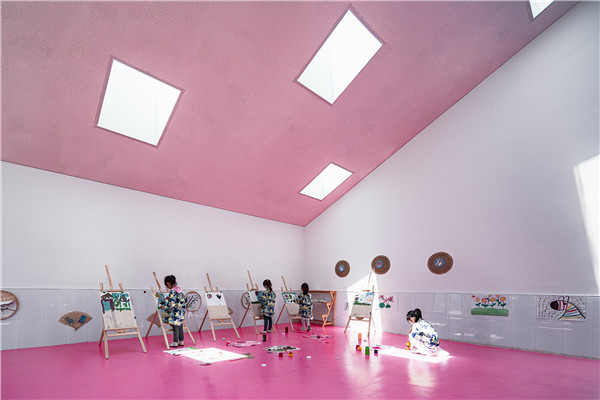Far from the madding crowd
By Fang Aiqing | China Daily | Updated: 2019-11-29 07:45

"We want them to be confident about their origins and the environment they grow up in. It can be a very agreeable place to learn, despite being a comparatively underdeveloped region," Dong says, highlighting the importance of keeping the kindergarten consistent with its surroundings, and providing a familiar environment for children whose parents are not around.
The basic logic and style of design of Shuoji Kindergarten is similar, but for the latter, the architects set all the buildings along the perimeter to form a peaceful inner courtyard to shield the children from the madding crowd outside: a network of busy roads occupied by commercial buildings, public institutions, businesses and factories, and construction sites.
To build a public kindergarten like this does not have to cost more-"We did not throw money at things adults assume to be important but are actually meaningless to children," Dong says.
For example, the buildings have a simple and basic interior-once given such a neutral environment, children can always discover and even invent things they love to do.
Theoretically, these rural school designs can be promoted as long as local policymakers, educators and parents accept the alternative educational concepts behind them, Dong says, and this makes his projects in the county viable.
Jiangsu province, as one of China's most economically developed provinces, has been pursuing preschool education reform since 2012, Meng says.
According to her, it was the local educational bureau's idea to try out something new instead of replicating the usual designs for rural kindergartens.
The higher fee asked for by the Beijing-based architects over that of a nearby design institute didn't hold the local government back. Meanwhile, the design respects and revives the local architectural style that has been fading over the past decades.
However, when it came to the construction, the architects were still often asked why they designed a cluster of buildings similar to existing village houses instead of a "modern" school as it was imagined to be by the villagers.
Dong admits some of their ideas were simplified.























